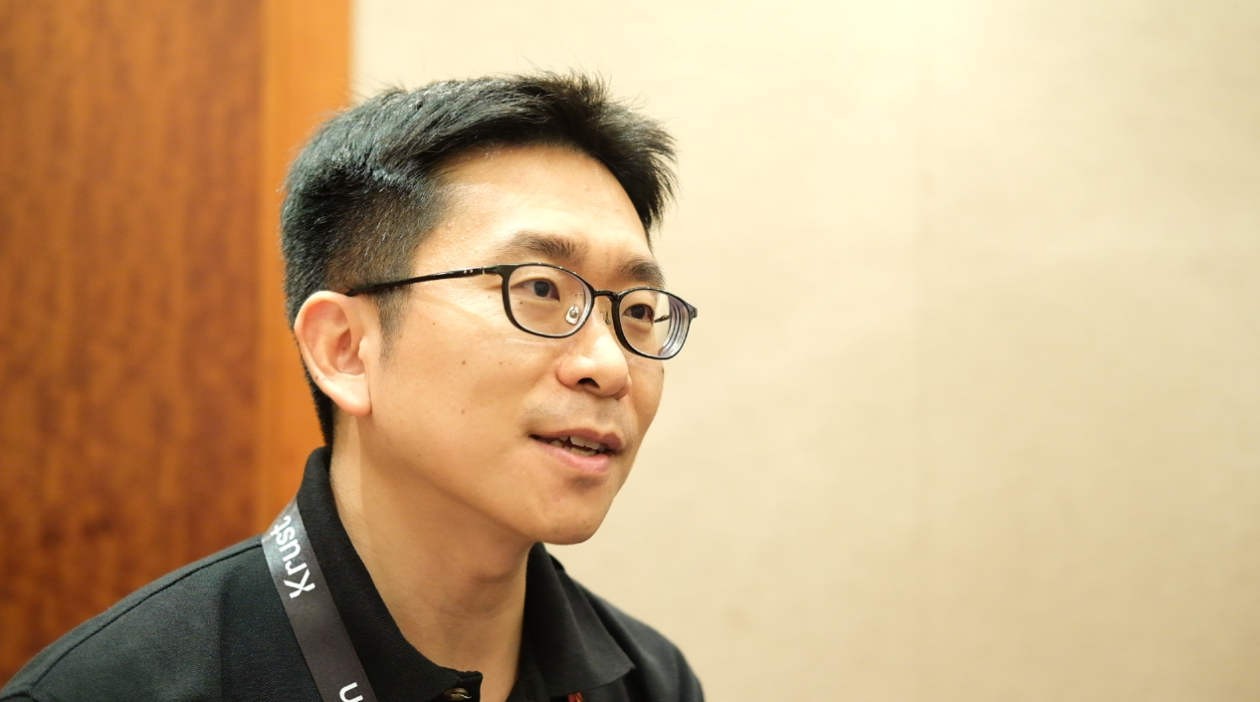The last few months have been dubbed the “perfect storm” for the crypto world, with the Terra-LUNA collapse, a slew of bankruptcies and security breaches on cross-chain bridges.
Investor confidence in crypto and blockchain projects has been hit, a challenge that blockchain developers such as Klaytn, a South Korean layer-1 blockchain, want to address.
Established in 2018 by Ground X, the blockchain subsidiary under South Korean internet giant Kakao, Klaytn quickly became one of South Korea’s top base blockchain networks. Krust, Kakao’s Singapore-based investment subsidiary, provides operational support to Klaytn.
Sam Sangmin Seo, the head of Klaytn, gave a wide-ranging interview to Forkast reporter Danny Park during this week’s Korea Blockchain Week event, after he launched a US$20 million initiative called the Blockchain Research Center (BRC) Program, a virtual institute that will conduct research on blockchain technology.
The interview, which was conducted in Korean, has been translated by Forkast and edited for language and brevity.
Park: One of the issues we have in blockchain is security. We’ve seen many attacks on cross-chain bridges. As an expert on blockchain, how do you think this issue can be addressed?
Seo: The bridges have two issues in security — there’s either a flaw in the implementation or a problem with the operator, such as the operator’s [private] key being hacked. We are aware of those risks, and we are looking into bridges based on zero-knowledge proof technology, which can provide proof without an operator. In fact, a lot of the hacks are caused by human errors. If we can reduce that, it’s possible to build a safer bridge. To further explain, it’s reducing human intervention on the protocol level.
See related article: Chainalysis says $2 bln stolen in cross-chain bridge hacks this year, more expected
Park: How has the Terra-LUNA debacle and the crypto winter affected Klaytn?
Seo: The biggest impact Terra-LUNA left is that the government views this industry with more seriousness. That is, they are going to try to make better regulations, faster legislation to minimize damages on ordinary investors. And we support that 100%. I think in terms of regulations and the government, we’re heading the right direction.
See related article: South Korea’s all-encompassing crypto law is coming — what we know so far
Park: In your eyes, what is the ideal metaverse for the future?
Seo: I want the future of metaverse to be where virtual space and reality can merge together more naturally. People create their own identity in a certain environment, and with that identity they work in their own communities such as economic activities. So the metaverse itself should be where people can realize their different creativity, different identities and live together.
Park: Earlier this year, there had been reports of sexual abuse against minors on the metaverse. How do we manage this?
Seo: I think this is quite similar to the discussion on AI (artificial intelligence) ethics. When the technology is used for crime, who’s at fault? In the case of the metaverse, rather than blaming the technology, the focus should be on how we utilize and manage it.
When the internet first appeared, as you know it was the biggest hit with the sex industry. But with necessary regulations and as the user community went through self-purification, such space was reduced and we don’t see it as a problem to the entire industry.
Like that, some issues may be discussed and examined right now about the metaverse but once there are regulations in place and people realize that the platform is not for such behavior, the problem will diminish naturally. We need to give it some time.
See related article: South Korea struggles to prevent sexual harassment of minors in the metaverse
Park: Ground X, Kakao’s subsidiary that established the Klaytn blockchain, recently completed the central bank digital currency experiment with the Bank of Korea (BOK). What comes next?
Seo: The experiment that was wrapped up in June was testing the CBDC platform and necessary technology. The next stage will have local banks participate in the CBDC network — in the end, the BOK plans to have banks distribute CBDCs. The BOK issues the CBDC, supplies them to the banks who will then make use cases with [the CBDC].
The last stage was joined by Ground X, but now the manpower has moved to Krust (Kakao’s Singapore-based investment subsidiary that currently provides operational supports Klaytn). We are planning to have Krust join the next stage as well.
Park: Do you see a possibility of CBDC being commercialized in South Korea?
Seo: I think it’s a difficult topic to talk about. Developing CBDC is for preparing for a cashless society plus expanding financial inclusion. But South Korea’s already a cashless society, so there are concerns asking what difference CBDC makes when already cash is not being used.
Secondly on financial inclusion — the challenge is if CBDC can provide UX (user experience) as easy as cash to elderly citizens or areas with no internet access. That is one of the concerns as well. We will also have to see if CBDC can open new possibilities such as a new industry or new jobs. If the chances are high, CBDC might be commercialized but it’s hard to tell as we’re still in the test stage.
See related article: Inter-country use key for CBDCs to reach potential: report
Danny Park: What is the current trend in DeFi?
Sam Sangmin Seo, Klaytn: One of the biggest topics in DeFi right now is finding a safe stablecoin after the LUNA debacle, as stablecoins can work as a key currency in DeFi. [Klaytn] has an active locally based DeFi community, but we still think a lot is lacking, especially in bridges and in cross-chain communication. The total value locked (TVL) that can come from one chain is limited and there needs to be fund inflow from elsewhere.
Park: The South Korean DeFi market is smaller compared to its crypto market — why is that?
Seo: What stumped the growth of [South Korea’s DeFi market] was the environment for developers. Cash or capital needs to enter [the country] through a centralized exchange in crypto from outside, but that channel for entering [Korea] is quite limited. Especially with the fact that South Korea does not have that many exchanges, and the size of the capital inflow is quite small as well.
In the end, what we need is the fund from overseas to enter the country — in that sense, South Korean projects lack the connection or bridges to foreign [capital].
Note: Foreign users are virtually blocked from using South Korea cryptocurrency exchanges under local regulations.





